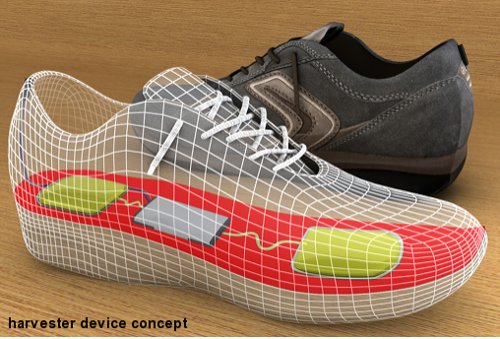University of Wisconsin researchers have come up with a way of converting human motion into energy to power a smartphone. But they say a commercial model is years away.
While the principle of using kinetic energy from a person walking to power a device has been explored in the past, Tom Krupenkin and Ashley Taylor have a slightly new twist on the technique.
Their inspiration came from electrowetting, the way that a surface that doesn’t absorb liquid (thus causing droplets to form) reacts in a different way when electrically charged (thus changing the shape of the droplets.)
Krupenking and Taylor’s concept simply reverses this process, such that the movements of the droplets caused by motion can be converted into electrical current. Using a form of Gallinstan, a liquid metal alloy used in thermometers, they believe a device in a shoe could produce between 1 and 10 watts, depending the speed of the walker and the efficiency of the device.
In raw terms, that’s very inefficient: some estimates say a person running can produce up to a kilowatt of power, usually lost as heat. But compared with existing devices that convert mechanical energy to electrical energy, it’s a huge improvement. The BBC notes that one set-up, which uses under-floor mats to power automatic doors in two Tokyo railway stations, relies on the fact that thousands of commuters will pass over the mats.
While the most obvious use of the reverse-electrowetting device would be to use shoe movements to power a portable device such as a phone, there is the obvious barrier of how to physically transfer the power from shoe to gadget. There has been suggestions of using a USB cable in some circumstances, such as military use where the style issues of clipping a phone to an ankle holster wouldn’t be a problem. However, for consumer use the most likely compromise seems to be that the shoe device would also make the connection to the phone network, which is one of the most power-intensive parts of the phone. A short-range Bluetooth of Wi-Fi connection could then transfer data.
The pair have now formed their own company, Instep Nanopower, and are seeking investors to help turn the concept into reality.

